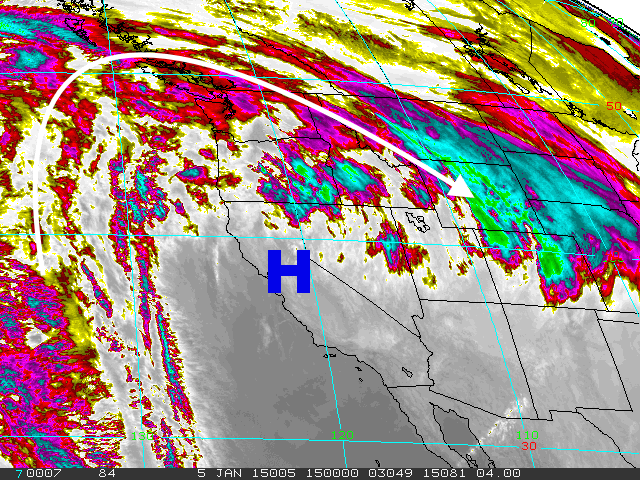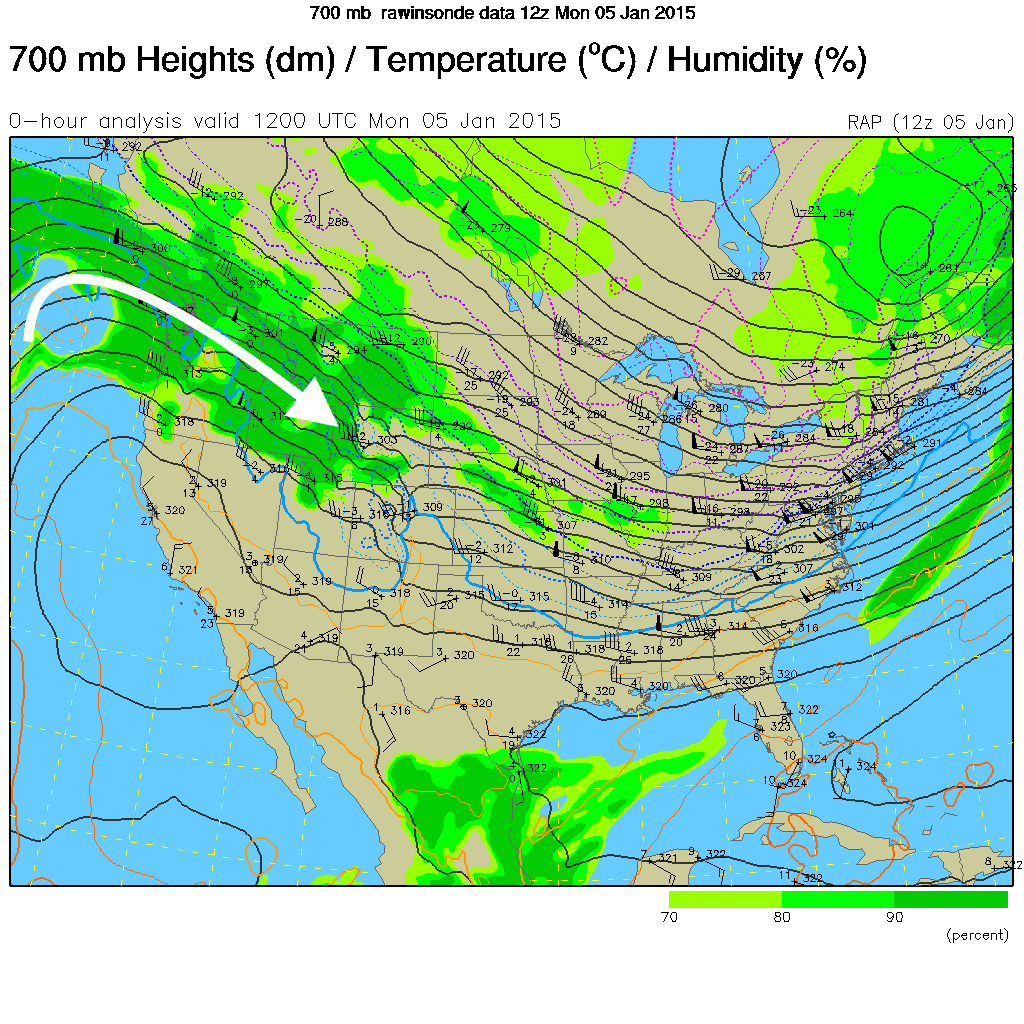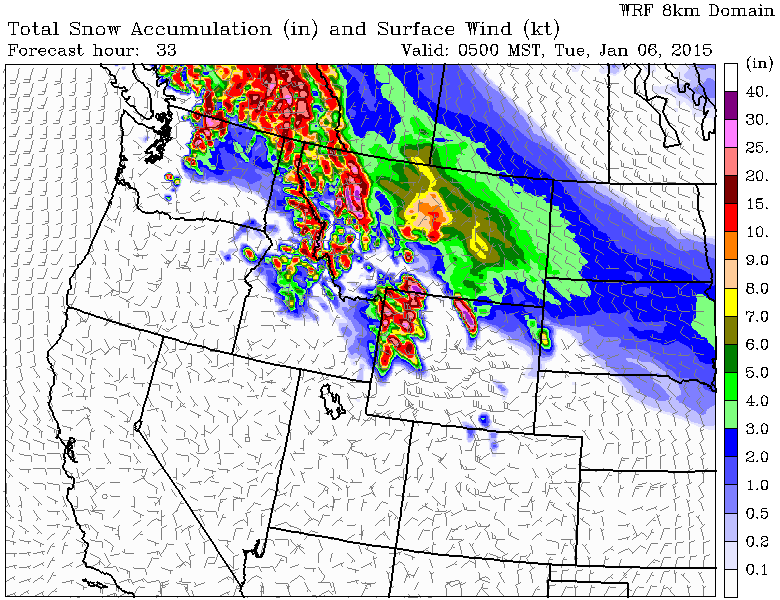 |
| Meteorologist Jim Woodmencey |
1) How much moisture is in the air. 2) How unstable the air is.
1) The first puffs of cumulus appear before noontime.
 |
| Meteorologist Jim Woodmencey |
|
Probability of Precipitation
|
||
|
Probability
|
“Uncertain” Term
|
Alternate Description
|
|
10 to 20 %
|
Slight Chance
|
Isolated
|
|
30 % to 50 %
|
Chance
|
Scattered
|
|
60 % to 70 %
|
Likely or Possible
|
Widespread or Numerous
|
|
80 % to 100 %
|
No terms used, forecast just reads: “Rain”, “Snow”, “Thunderstorms”, etc.
|
|
 |
| Meteorologist Jim Woodmencey |
|
NOAA Climate Prediction Center Three-Month Outlooks
|
||
|
Three-Month Period
|
Temperature
|
Precipitation
|
|
NOV-DEC-JAN
|
55% above
|
55% below
|
|
DEC-JAN-FEB
|
60% above
|
65% below
|
|
JAN-FEB-MAR
|
50% above
|
60% below
|
|
Probabilities from the new Experimental “Unofficial” Two-class Climate Outlooks
|
||
 |
| Meteorologist Jim Woodmencey |
(Note: The article in this post was originally published in the Jackson Hole News and Guide on August 19, 2015).
The comments and questions are starting to come more often now, about the current El Nino and how it will affect our winter. I blame the bigger media outlets for creating this hype, by attaching monikers to their headlines like: “Super El Nino”, “Strongest El Nino Ever”, and my personal favorite, “The Great Godzilla of an El Nino”.
 |
| Meteorologist Jim Woodmencey |
An unusually cold Low pressure system for late July moved across the Northern Rockies on Monday, July 27th, 2015 , bringing with it a dramatic drop in temperatures, and snow to the higher elevations of the Teton Range in western Wyoming, as well as some strong, gusty winds.
SNOW
Snow was observed at the top of Teton Pass Monday evening, at an elevation of just over 8400-ft. Snow was on the ground down to around the 9500-ft. elevation on Tuesday morning in the Tetons. It is not especially unusual in the higher Tetons to have snow in July, however, to see it on the mountains to such a low elevation this time of year it is. Last summer it snowed down to about the same elevations in late August. So, we are a month earlier this year!
WIND
There were some strong gusty winds with that front, hitting 70 mph at the Lower Saddle (11,610-ft.), 54 mph on top of the JH Tram (10, 318-ft.), and 49 mph over on Lava Mountain near Togwotee Pass (10, 430-ft.).
The Jackson Hole Airport experienced wind gusts of 30 to 40+ mph between noontime and 3:00 pm. They maxed out with a 43 mph gust.
TEMPS
Temperatures dropped over 20 degrees in the valley as the front passed in the afternoon, going from a highs in the mid to upper 60’s around noontime to the mid to upper 40’s by 3:00 pm.
The low temp at the JH Airport Tuesday got down to 30-degrees. In town it was mid 30’s and not really threatening the record low of 31 degrees for July 28th, set back in 1940. The record low for July 29th is 27 degrees, and I have foretasted a low near 30 for Wednesday morning.
In the mountains temps went from a high near 70 degrees at 10,000-ft. on Sunday afternoon to highs in the upper 50’s at noontime Monday, then the temperature plummeted to near 30 degrees by 3:00 pm Monday afternoon. A 40-degree drop in about 24-hours!
At one point Monday evening at the Lower Saddle of the Grand Teton, the temperature was 25 degrees and the wind was blowing steady at almost 40 mph, causing the windchill factor to make it feel like 7 degrees. Yes, seven!
 |
||||||
| Summary of Weather Events around Jackson Hole & the Teton Mountains for July 27th, 2015. |
Post by Meteorologist Jim Woodmencey
 |
| Meteorologist Jim Woodmencey |
We were underneath a Southwesterly flow this week in western Wyoming out ahead of a Trof of Low-pressure that was over the western US. That kept a decent supply of moist and unstable air overhead that produced late day thunderstorms on Monday, none on Tuesday, and then as that Trof got closer, some rain showers & thunderstorms on Wednesday.
The crescendo of activity was Wednesday evening in Jackson Hole as the cold air aloft within that Trof crossed into western WY, acting just like a cold front passing through. Combine that with the best heating of the day, and good lifting in a Westerly flow over the Tetons, and away ya go!
Some Weather Highlights from Wednesday:
There was also a decent amount of lightning along the Teton Range, and a few good strikes near town, as well. Below are some images of weather maps during the height of the activity on Wednesday.
 |
 |
| Radar with lightning overlay. Jackson is yellow dot. Yellow circle highlights the whole thunderstorm complex. |
 |
| Satellite and lightning strikes, yellow arrow upper level wind direction. Image courtesy of MeteoStar |
 |
| Infra-red satellite image at 5;30 pm MDT |
 |
| Meteorologist Jim Woodmencey |
 |
| Meteorologist Jim Woodmencey |
This winter began pretty much the same way it ended, with people thinking about mowing their lawns. Those thoughts were squashed at both ends with abrupt changes from warm and sunny to cold and snowy.
Late Fall
 |
| Meteorologist Jim Woodmencey |
Lots of SNOW & wind for Jackson Hole, ski areas and weather instruments around the mountains reporting 20 to 26 inches of new snow from Friday night through Monday morning in the Teton Mountains.
But, this is not technically a big “storm system”. It is a STORM, and we are getting very stormy weather…..but it is not being generated from a typical low pressure system, or what we would call a storm system.
This is a strong Northwest Flow aloft that is carrying moisture over the top of a Ridge of High pressure that is parked over the Western U.S.
Yes, this is sometimes referred to as a “Dirty Ridge”, when moisture rides over the northern periphery of the Ridge axis and causes some weather, rather than the clear skies we normally experience when directly underneath the Ridge itself (like California is right now).
There is no Trof of Low pressure in the upper atmosphere anywhere nearby. Just a weak surface Low pressure over Montana.
But this is one of the best ways to produce snow in the Tetons, with a very moist and strong NW flow.
— 700mb map and Satellite photo shows flow and moisture (RH) in that flow.
— Surface Map shows the overall weather pattern with High pressure to south & west of Wyoming, and a stationary front east of the Continental Divide, with warm air to the west of that line and colder air to the east of that line.
— Snowfall forecast map is for Monday morning thru Tuesday morning.
Good snow producer across the northern Rockies. Nothing going on to the south of Idaho or Wyoming with this current flow.
 |
| Infra-Red Satellite 0800 MST 05JAN15 |
 |
| 700mb or @ 10,000-ft. 0500 MST 05JAN15 |
 |
| Surface Map 0500 MST 05JAN15 |
 |
| Snowfall forecast map 05 to 06 JAN 2015 |
Posted by meteorologist Jim Woodmencey
05JAN15
 |
| Meteorologist Jim Woodmencey |